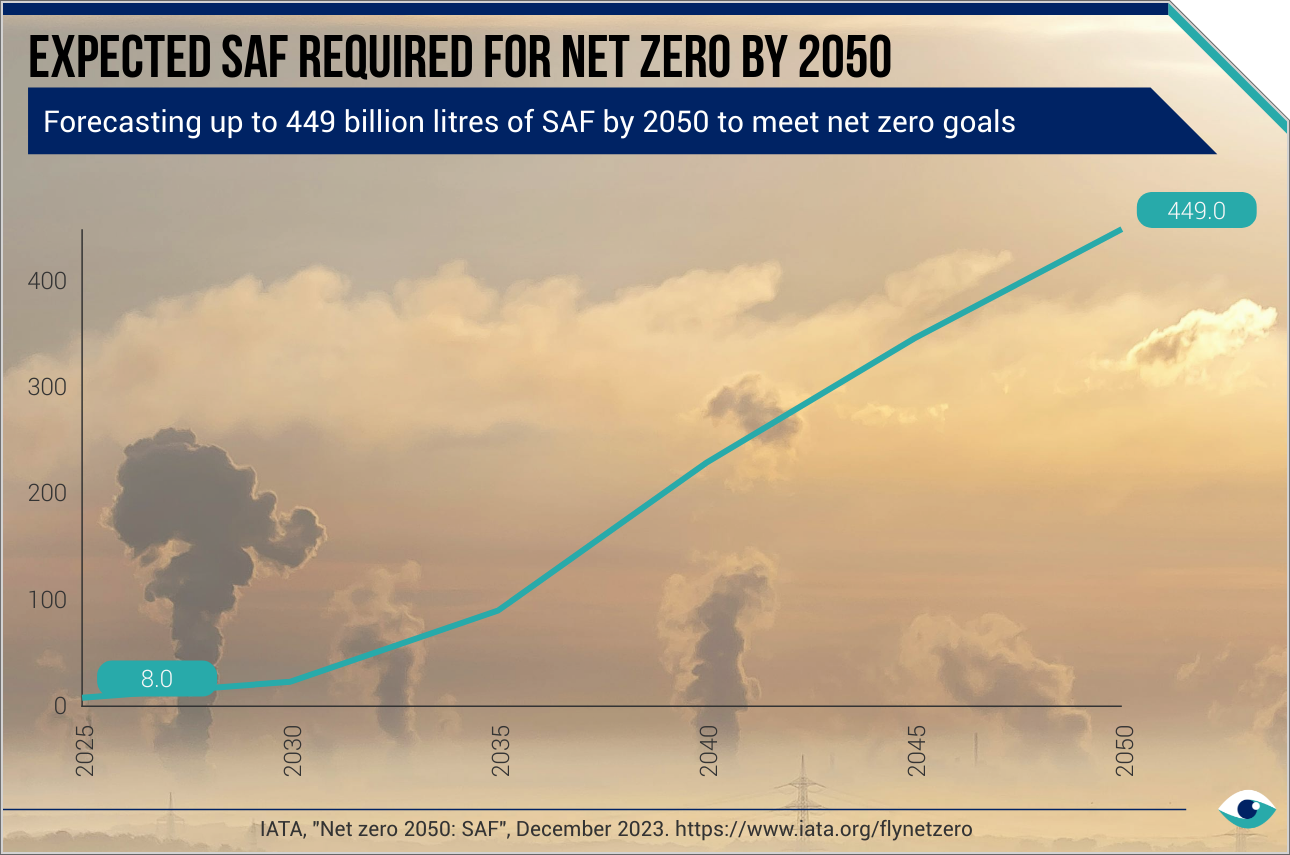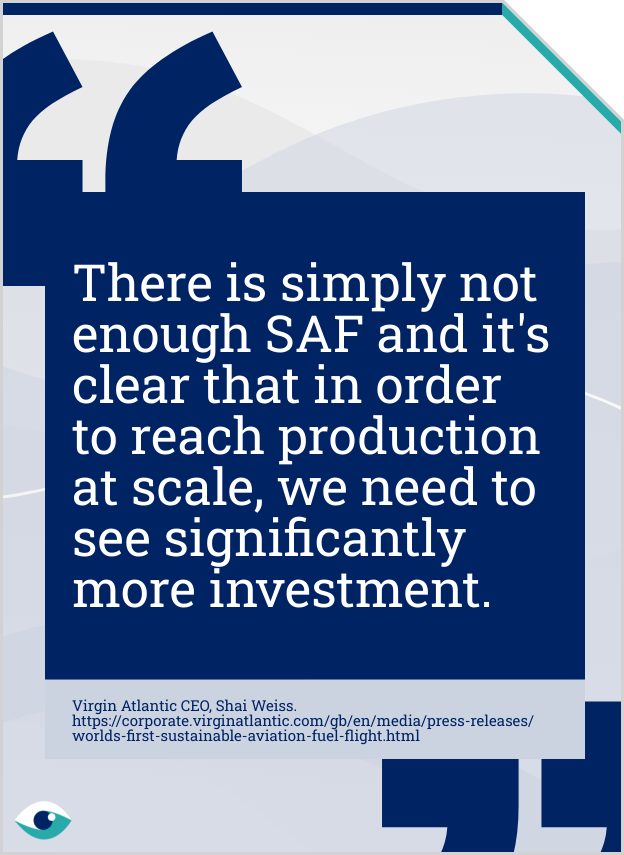A recent study shows that the first transatlantic Sustainable Aviation Fuel (SAF) flight saved 95 metric tonnes of CO2, highlighting SAF’s potential to drastically reduce Greenhouse Gas (GHG) emissions in aviation. Despite its benefits, SAF currently represents less than 0.1% of global jet fuel, with regulatory initiatives like the EU’s ReFuelEU mandating gradual increases. The aviation industry, facing stringent global emissions standards and increasing consumer demand for sustainable travel, must accelerate SAF integration. Otherwise, aviation companies may face emissions pricing costs, increased operating costs, and competitive disadvantages.

SAF: aviation’s main path to decarbonisation
Advances in SAF require ramp-up in production and strategic deals to meet fuel demands and avoid potential emission pricing costs
Planet: Environmental impacts
Aerospace
AT A GLANCE
SAF can reduce lifecycle CO2 emissions by up to 80% compared to conventional jet fuels, studies show.
With the aviation’s commitment to reach net-zero by 2050, companies are encouraged to integrate SAF or face emissions pricing costs.
Global companies are already integrating SAF, but supply is limited; current production only covers 0.1% of total fuel consumption.
Advances in SAF technology
Scientific advancements in SAF show significant reductions in GHG emissions, offering a viable pathway to meet aviation’s net-zero target by 2050. An IATA report notes that SAF can reduce lifecycle CO2 emissions by up to 80% compared to conventional jet fuels, depending on the feedstock and production methods. Innovative technologies like catalytic hydro thermolysis, which converts bio-based feedstocks into jet fuel, has further enhanced the efficiency and environmental benefits of SAF.
Industry action on SAF
SAF adoption is increasing across the global aviation industry. In 2022, 184 member states of the International Civil Aviation Organisation (ICAO) set a long-term target to achieve net-zero carbon emissions by 2050. This commitment is reflected in the increasing trend of airlines entering into offtake agreements with fuel suppliers to secure SAF supplies. These agreements are contracts that guarantee the purchase of fuel produced in the future. Since 2016, over 360,000 flights have used SAF.

SAF mandates increase
Regulatory frameworks play a critical role in advancing SAF adoption . The EU’s ReFuelEU initiative sets a mandate for a progressive increase in SAF blending – from a 2% blend in 2025, to 63% by 2050. This aims to establish stable and predictable market demand, likely setting a precedent for similar regulations globally. Under SASB airlines accounting standard, companies need to disclose their GHG emissions, emission reduction targets, and their integration efforts toward alternative fuels.

Future outlook and challenges
Despite proactive efforts to integrate SAF, there are challenges in scaling its use. Currently, SAF makes up less than 0.1% of total aviation fuel consumed. As passenger numbers are projected to rise to 6.9 billion by 2035, approximately 450 billion litres of SAF will be required to achieve net-zero. Achieving 10% SAF use by 2030 will require substantial investments in production capabilities and the adoption of supportive policies, such as fuel taxes and low-carbon fuel standards, to boost SAF production.
FURTHER READING
- Developing SAF (IATA)
- SAF’s benefits and production (US Department of Energy)
- A scientific review of SAFs (Springer Link)
